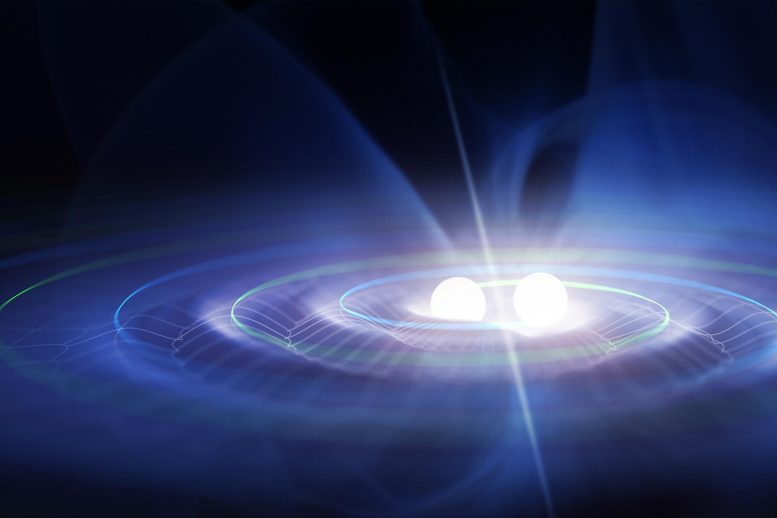
An international research team has found a potential link between neutron star mergers and fast radio bursts (FRBs), two of the universe’s most enigmatic phenomena. The observed correlation, if confirmed by further data, suggests that some FRBs may be created by the merging and subsequent collapse of neutron stars, potentially providing a new understanding of these mysterious cosmic events.
An international group of researchers has identified a potential link between gravitational waves from neutron star mergers and fast radio bursts. This finding could enhance our comprehension of the mechanisms behind certain deep-space burst phenomena.
The mysteries of the cosmos may slowly be lifting their veils, thanks to swift technological progress and fortified research partnerships that are empowering astronomers to piece together cosmological clues like never before.
In a study recently published in Nature Astronomy, a multinational collective of researchers reveals an intriguing correlation for the first time: the potential link between neutron star collisions and fast radio bursts (FRBs) – two perplexing cosmic events that have fascinated scientists for the last twenty years.
The team, which includes researchers from UNLV, University of Western Australia (UWA), and Curtin University, reports on the observation of a deep space neutron star merger followed just 2 ½ hours later by an observed FRB. If confirmed, the correlation between the two events could unlock part of the mystery of how FRBs are generated.
Fast radio bursts (FRBs) are millisecond-long pulses of electromagnetic radio waves that occur in deep space and produce the energy equivalent to the sun’s annual output. Most FRBs occur as one-off events, while others present as repeating bursts. Though their origins are still a bit of a mystery, the fraction of FRBs emitted as repeated bursts are likely produced by highly magnetized neutron stars known as magnetars.
Though one-off bursts may share a similar origin, this study suggests that they may also be formed as a result of gravitational waves (GWs) generated by colliding neutron stars.
“An association like this one is not completely unexpected,” said UNLV astrophysicist and study co-author Bing Zhang, who initially proposed a GW-FRB association scenario back in 2014. “One possibility is that the merger of neutron stars leaves behind a rapidly spinning massive neutron star rather than a black hole. The neutron star eventually collapses to a black hole after it spins down, ejecting its magnetosphere to create the FRB.”
Gravitational wave (GW) detectors, including the Laser Interferometer Gravitational-Wave Observatory (LIGO) in the U.S. and the Virgo detector in Italy, have been observing GW events from collisions of black holes or neutron stars since 2015.
Both the GW event and the FRB event in the proposed association were detected on April 25, 2019. The binary neutron star merger event, dubbed GW190425, was the second event of its kind ever detected by GW detectors. The FRB event, dubbed FRB 20190425A, was detected by the Canadian Hydrogen Intensity Mapping Experiment (CHIME) and occurred about 2 ½ hours later.
As the connection between neutron star mergers and FRBs had long been theorized but not observed, researchers from UWA (grad student Alexandra Moroianu and professor Linqing Wen) and Curtin University (professor Clancy James) blindly searched for possible GW-FRB associations. They eventually identified this pair, which occurred in a similar area of space and suggest a probability that they’re possibly linked.
“This is extremely exciting and would certainly help unravel some of the mystery surrounding these fast radio bursts, such as why repeating and non-repeating bursts exhibit different properties,” said study lead author Alexandra Moroianu, who overcame serious health complications during the course of her research.
Though even the possibility that the two are linked is encouraging to astronomers, Zhang, who along with UNLV doctoral student Shunke Ai presented the theoretical modeling to interpret the event, cautions that further observations are needed to strengthen the correlation.
“Given the chance probability statistics, I wouldn’t definitively confirm the association just yet,” said Zhang. “At the same time, though, the potential association presented in this work definitely calls for closer scrutiny of future GW–FRB associations.”
Zhang says that with another observing run of gravitational wave detectors just around the corner and with more FRB detection machines in place, more data will be accumulated to eventually test whether such associations are physical and common.
“If this is the case, then the nuclear matter must be very ‘stiff’ at very high densities, which means that a neutron star can sustain a lot of mass,” said Zhang. “The maximum mass of neutron stars would be much larger than currently most people believe.”
Reference: “An assessment of the association between a fast radio burst and binary neutron star merger” by Alexandra Moroianu, Linqing Wen, Clancy W. James, Shunke Ai, Manoj Kovalam, Fiona H. Panther and Bing Zhang, 27 March 2023, Nature Astronomy.
DOI: 10.1038/s41550-023-01917-x

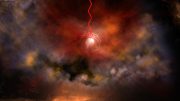
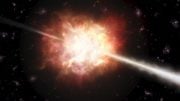

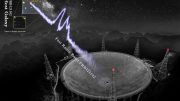
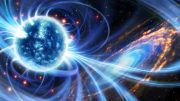
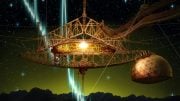
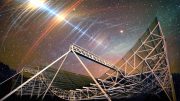
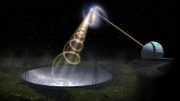
Be the first to comment on "Decoding Deep Space Mysteries: Researchers Uncover Potential Link Between Two of Astronomy’s Most Enigmatic Phenomena"